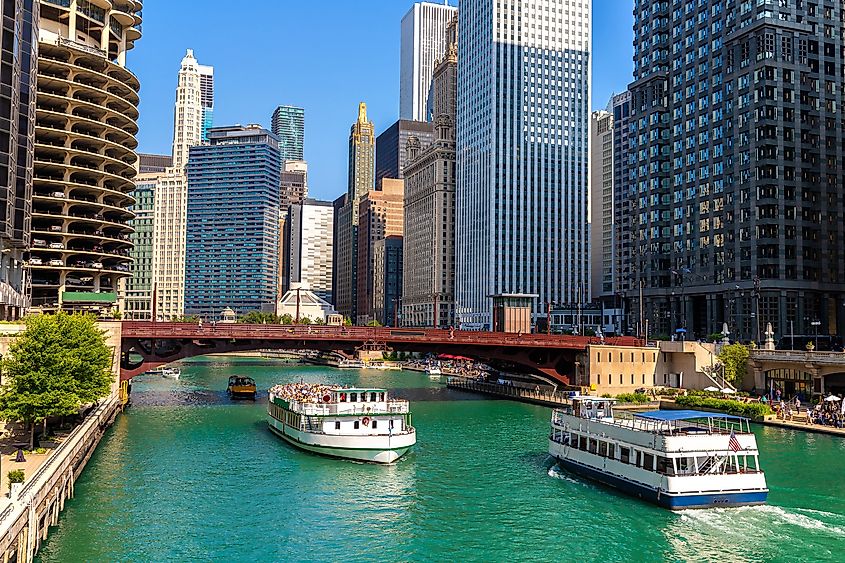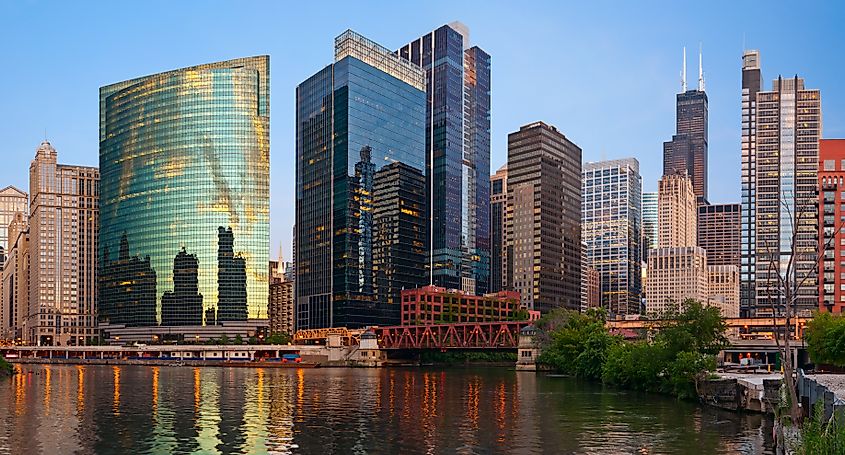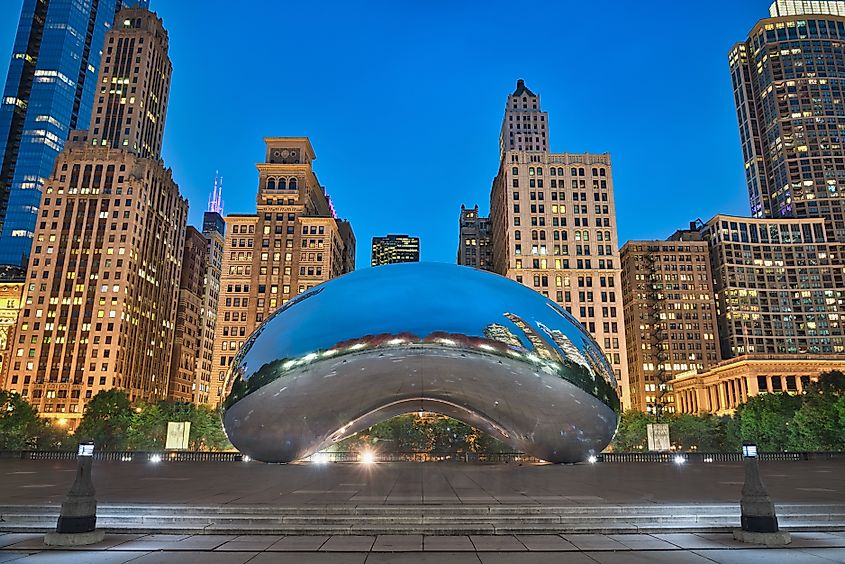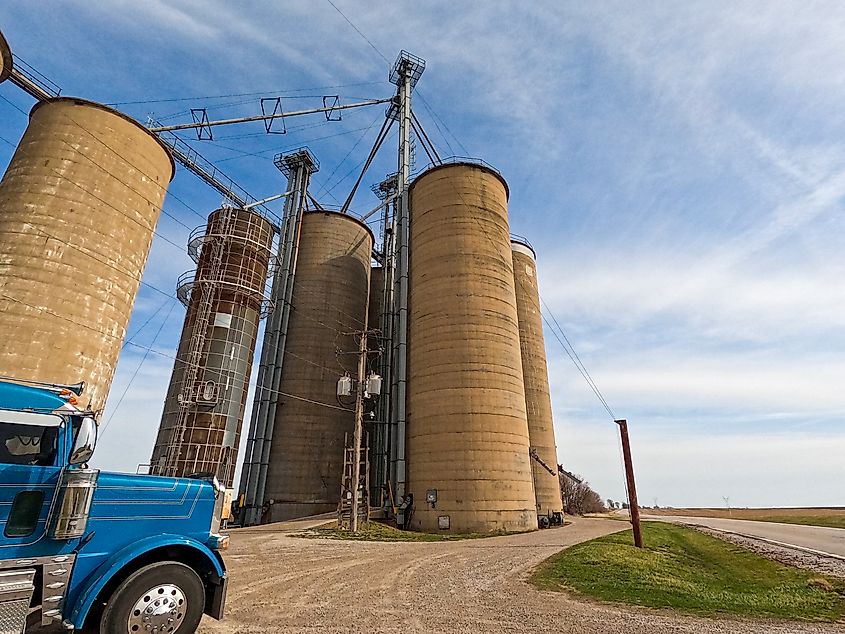
Midwest
When Americans refer to the "heartland," they’re talking about the Midwest. But this iconic region is much more than just a sentimental phrase—it’s a geographic, economic, and cultural powerhouse that continues to shape the nation. Spanning 12 states and stretching from the Great Lakes to the Great Plains, the Midwest is a vast and varied landscape. It’s where steel met soil, where political ideals were forged, and where much of America’s character was built.
Defined by the federal government as including Illinois, Indiana, Iowa, Kansas, Michigan, Minnesota, Missouri, Nebraska, North Dakota, Ohio, South Dakota, and Wisconsin, the Midwest covers millions of acres. And though many view it as a single region, it’s actually composed of two historic and distinct areas: the industrialized Northwest Territory and the agriculturally rich Great Plains.
The Midwest’s Origins

The Midwest began taking shape in the late 18th century when the United States gained control of the Northwest Territory at the end of the American Revolution in 1783. This expansive area—spanning modern-day Ohio, Indiana, Illinois, Michigan, Wisconsin, and part of Minnesota—was the first organized US territory outside the original 13 colonies.
Under the Northwest Ordinances of 1785 and 1787, the land was methodically divided and opened for settlement. These laws established a blueprint not only for land ownership but also for the admission of future states. Importantly, they banned slavery in the territory, setting the stage for a culture that, while diverse, leaned heavily toward anti-slavery sentiments during the country’s most divisive era.
Meanwhile, the Great Plains—eventually part of the Midwest—entered the Union through the Louisiana Purchase in 1803. This sprawling area of grasslands would develop slower than the Northwest, due in part to harsh conditions and limited infrastructure. But its fertile soil made it a prime target for future farming and ranching.
Transportation and Industry

One of the most transformative forces in Midwest history was transportation. In the early 19th century, canals—followed closely by a growing network of railroads—connected the region’s burgeoning towns to the Atlantic markets. These links allowed goods, crops, and people to flow in and out with greater speed than ever before.
The impact was massive. Chicago, founded in the 1830s and ideally located on Lake Michigan, exploded in population and importance. By 1890, it was the second-largest city in the United States, a title earned through its central role in trade, manufacturing, and finance. Other cities like Cleveland, Detroit, and St. Louis also emerged as industrial giants, powered by the Midwest’s abundance of coal, iron ore, oil, and limestone.
The region quickly became an industrial juggernaut. By the end of the 19th century, the Midwest accounted for nearly 30% of all manufacturing employment in the country and contributed almost a third of the nation’s total manufacturing value.
The Great Plains

While the urban and industrial growth of the Northwest Territory was swift, the Great Plains followed a slower trajectory. Harsh weather, lack of water, and difficult travel conditions made early settlement challenging. Many settlers bypassed the Plains entirely in favor of the West Coast.
But change came in the late 1800s. With the introduction of barbed wire fencing, the subjugation of Native American tribes, and the arrival of the railroad, settlers began to arrive in greater numbers. Farmers, cattle ranchers, and tradesmen built communities and cultivated the land, turning the once-overlooked region into an agricultural powerhouse.
Today, states like Kansas, Nebraska, and South Dakota are known for their contributions to American agriculture, from corn and wheat to cattle and soybeans.
A Political Powerhouse

The Midwest’s role in US politics cannot be overstated. It was here that the Republican Party was born in the 1850s, driven by a platform that opposed the expansion of slavery. Two of the party’s earliest and most influential figures—Abraham Lincoln of Illinois and Stephen A. Douglas—emerged from the region and shaped the course of national history.
During the Civil War, the Midwest overwhelmingly supported the Union, providing troops, manufacturing supplies, and strategic leadership. After the war, the region became a focal point for social and political movements, including the Granger movement of the 1870s, which fought for farmers’ rights, and the Progressive movement in the early 20th century.
Robert M. La Follette, a Midwestern senator from Wisconsin, was a leader in the Progressive era, advocating for reforms in labor, education, and government transparency. The region also gave rise to prominent labor unions, settlement houses, and temperance movements, further embedding itself into the national conscience.
Culture and Innovation

Culturally, the Midwest is an innovator in surprising ways. It has been home to some of the most groundbreaking American architecture, including the work of Frank Lloyd Wright. Department stores and retail giants such as Sears and Montgomery Ward also took root here, pioneering the mail-order catalog and changing how Americans shopped.
In literature, the region produced naturalistic writers like Hamlin Garland, whose stories captured the gritty realities of prairie life. In the arts, Gutzon Borglum—sculptor of Mount Rushmore—was a Midwestern native, and the region has long supported institutions like Chicago’s Art Institute and Cleveland’s Museum of Art.
Even the food culture here, often stereotyped as meat-and-potatoes fare, has grown increasingly diverse and influential, particularly in cities like Minneapolis, Milwaukee, and Kansas City.
Economic Shifts and a Changing Identity

While the 20th century was largely kind to the Midwest, the region has faced economic headwinds in more recent decades. Deindustrialization, automation, and globalization have reduced manufacturing jobs, leading to slower population growth and, in some areas, economic decline.
Still, the Midwest remains a key player in the US economy. It leads the country in farm output and remains strong in value added by manufacturing. Cities like Columbus, Indianapolis, and Minneapolis have reinvented themselves as centers of education, healthcare, and technology.
The region’s identity—once firmly rooted in heavy industry and agriculture—has evolved. Today’s Midwest is just as likely to include cutting-edge research universities and thriving tech startups as it is to boast endless cornfields and steel plants.
The Spirit of the Midwest

Perhaps what sets the Midwest apart is not just its geography or economy, but its people. Known for their resilience, practicality, and community-minded ethos, Midwesterners are often seen as the embodiment of “average Americans.” But there’s nothing average about the impact this region has had on the country.
Whether in the form of towering grain silos or urban skylines, the Midwest stands as a monument to what can be built when raw materials meet hard work and visionary thinking.
America’s Engine Room

The Midwest may not always grab headlines like the coasts, but its contribution to the American story is undeniable. It’s the land where Abraham Lincoln debated the future of the nation, where factories built the tools of prosperity, and where waves of immigrants found both challenge and opportunity.
With its deep roots in both soil and steel, its evolving cities and enduring small towns, the Midwest continues to serve as America’s engine room—quietly powerful, persistently productive, and richly woven into the nation’s fabric.